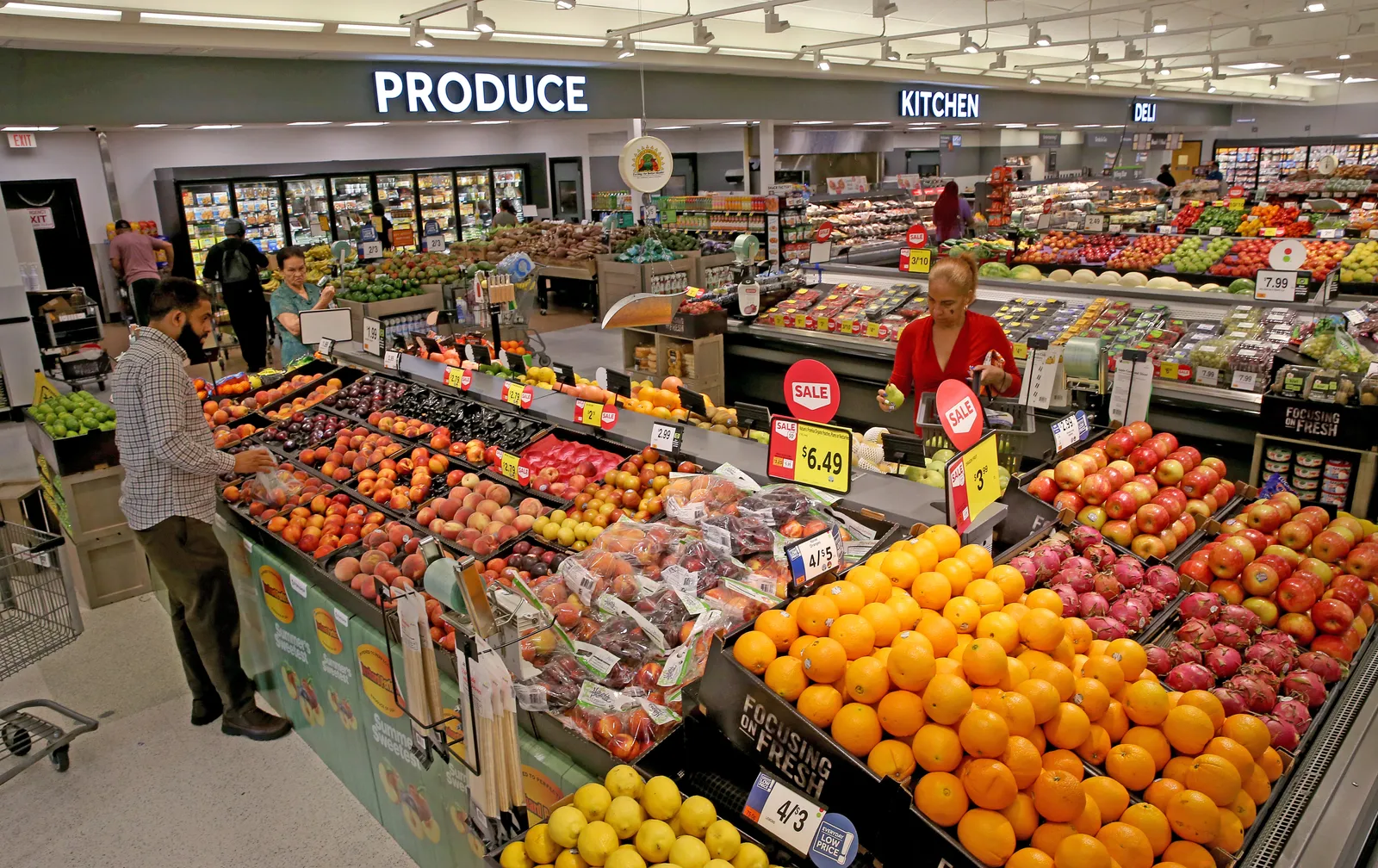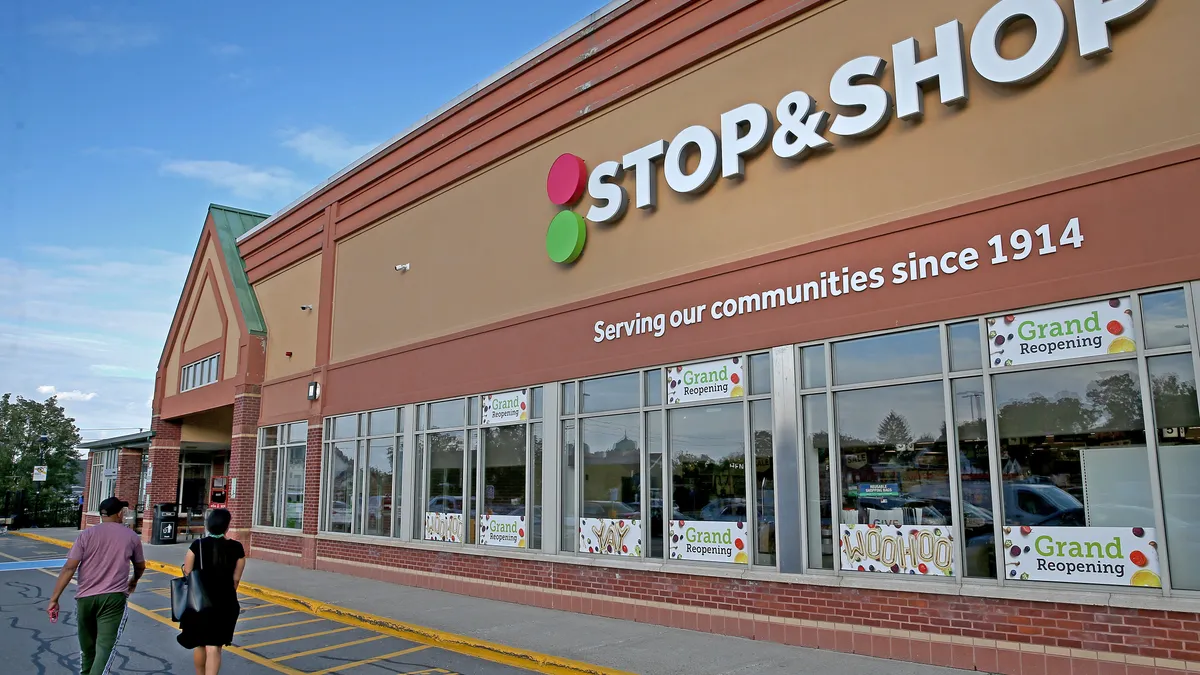Grocery stores are the unsung hubs of communities, but they often don’t accurately reflect or fulfill a community’s needs. So what if there was a supermarket that not only served as a place for food shopping, but also as a source for education, for addressing food insecurity and for improving an area’s overall health and wellness?
Stop & Shop is looking to achieve just that. With these three initiatives at the forefront, a new Stop & Shop store debuted in Boston’s Grove Hall neighborhood on Aug. 19 following a renovation project.
Stocked with everything customers expect from traditional Stop & Shop stores, including grocery staples and its private label items, the location comes equipped with an on-site dietitian and community wellness center in addition to establishing food pantries at two local schools. These cornerstones of the Grove Hall location offer a variety of tools, resources and other proactive measures designed to combat the neighborhood’s high rates of chronic health conditions, food insecurity and residents living below the poverty line.
“This project is not about money making or profit,” Jennifer Brogan, the grocer’s director of external communications and community relations, said in an interview. “This is about investing in our community and helping our neighbors. About making sure our customers know that we’re caring for the community.”

The community wellness center is a focal point of this new store format. With room for around 25 people, this space is set up to host a wide variety of educational courses, including financial wellbeing classes and first-time homebuyer workshops, Brogan said.
Grove Hall Stop & Shop’s in-store dietitian, Christine Sinclair, will also play a key role in the center’s workshops and classes. In charge of nutritional education, Sinclair is set to host cooking demonstrations and health classes, such as a high blood pressure-management course she held in September, as well as one-on-one consultations and virtual webinars — all of which are free services.
The hiring of in-store dietitians is a growing trend among grocers. The Food Industry Association’s latest report states that 81% of surveyed food retailers employ dietitians, with nearly half having strategic leadership roles.
Beyond offering health- and home life-centered courses, the community wellness center features a 25-foot customizable merchandise wall. This Guiding Stars wall displays healthy food items that are ranked and hand-picked by the store’s dietitian. Overall, it aims to make it easier for shoppers to identify healthy choices, Brogan said.

This Stop & Shop location is also going outside the walls of its store to give back to its surrounding community. The location is contributing to the Stop & Shop School Food Pantry Program, which launched in 2019 and works directly with schools to both establish and support food pantries.
“As part of our program, we have sort of zoned in on the Grove Hall neighborhood and we've opened to school pantries, one at a neighboring high school and one of the neighboring early education center. Both literally within a stone's throw of the store,” Brogan said.
Located at the Jeremiah E. Burke High School and The Rev. Dr. Michael E. Haynes Early Education Center, these two food pantries are each set up “like a little store” with a pantry space in the schools and support, in total, more than 200 students and their families, according to Brogan.
In addition to all of these community efforts, the Grove Hall Stop & Shop will be debuting the Flashfood food waste reduction app in Boston. The program provides discounts of up to 50% on grocery products nearing their best-by date, including fresh produce, meat and dairy items.

Location, location, location
Opening and launching such a specialized Stop & Shop store in Grove Hall was far from an accident. This project was two years in the making and largely stems from Stop & Shop’s president, Gordon Reid, who carried out a similar endeavor in Ward Eight of Washington, D.C., during his time with Giant Food, Brogan said.
According to Brogan, a number of elements from Reid’s Washington project were replicated and modified for this unique Stop & Shop, including the community wellness center as well as the process of choosing which neighborhood to locate the store in.
The grocer worked with the Boston Public Health Commission to compare neighborhoods in the city struggling the most with nutrition-related chronic health conditions, including high blood pressure, diabetes and obesity, Brogan said. In addition, they compared the rates of neighborhood populations living below the poverty line as well as the number of individuals facing hunger.
Alongside these city records, Stop & Shop compared it with their own information on store demographics and its Boston customer base, ultimately landing on Grove Hall.

In continuation with structuring itself around Grove Hall’s needs, the store also found Sinclair, its in-store dietitian, from the Boston Organization of Nutritionists & Dietitians of Color. Stop & Shop wanted to make sure they brought in someone who is not just familiar with the area, but also has experience working for it, Brogan said.
While Stop & Shop is implementing aspects of this project in other Stop & Shop stores, Brogan noted that the grocer does not have plans to replicate the entire concept elsewhere.














